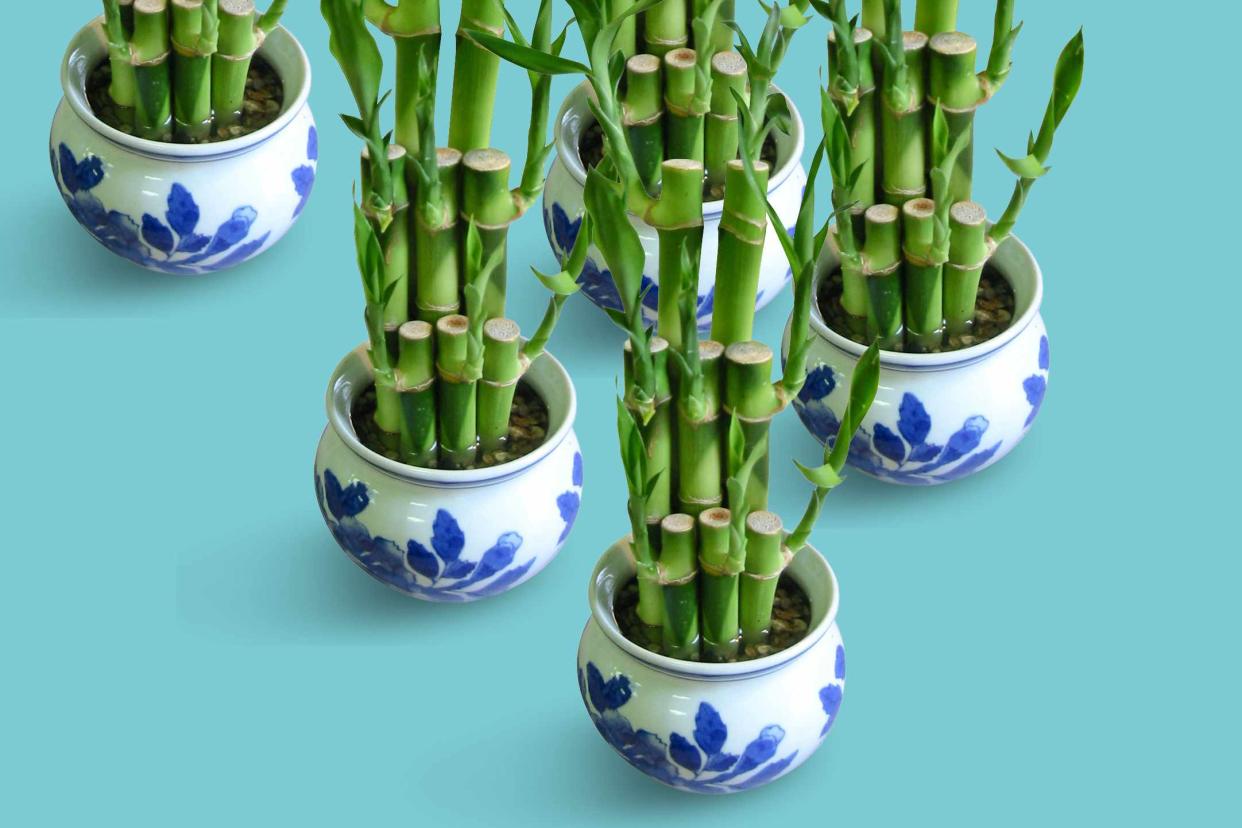How to Care for Lucky Bamboo
This plant symbolizes good fortune, and luckily, it's super easy to care for.

gollykim/Getty Imagees
Many plants are associated with symbolism, but with lucky bamboo, it's directly in the name. Lucky bamboo has long symbolised good fortune and happiness. Luckiness aside, however, the second part of the plant's name is a bit misleading, as lucky bamboo isn't actually bamboo at all. The houseplant we know by this name is actually Dracaena sanderiana, a tropical water lily native to Central Africa. The plant's stalks, however—which are often trained into braids or creative shapes when sold as a houseplant—strongly resemble bamboo. If you're looking to bring a symbol of good luck and fortune into your home, keep reading to learn how to care for lucky bamboo.
Care Tips
Fortunately, lucky bamboo is known to be an easy maintenance houseplant, so you don't have to worry about it dying on you (and subsequently, your luck running dry). Since lucky bamboo is a water lily, it can be grown in water as well as soil—but the following tips are most relevant to soil-grown plants.
Related: 9 Plants You Can Grow in Water—No Soil Necessary
Light
Lucky bamboo prefers moderate to indirect sunlight. They can also tolerate low light conditions, if you only have shady spots in your house. Just be sure to avoid direct sunlight, as too much light can scorch the leaves.
Soil and Water
For the best results, grow lucky bamboo in well-draining potting soil, keeping the soil moist but not soaked. Avoid overwatering as this can cause root rot.
If growing your lucky bamboo in water, be sure the roots always stay covered with water and replace the water every seven to 10 days to prevent the plant from rotting. To be safe, use filtered or distilled water, since tap water may contain chemicals that can negatively impact your plant.
Temperature and Humidity
Lucky bamboo plants prefer warmer temperatures, between 65 to 95 F. However, they can be sensitive to rapid temperature changes, so avoid placing the plant near a vent, window, or door. For humidity, average home humidity is typically sufficient for these plants.
Fertilizer
Lucky bamboo doesn't need fertilizer to survive. However, if you'd like to give your plant a growing boost, you can use half-strength diluted liquid fertilizer every month when growing in soil. When growing in water, decrease the frequency to every two months or more.
Propagating
Since lucky bamboo grows so well in water, it's no surprise that you can have easy success with plant cuttings, too. To propagate, cut an offshoot from a mature lucky bamboo plant, making sure to cut as close to the main stalk as possible. You can then place the cutting in water, refreshing the water at least once a week, until it grows roots. When roots have developed, you can either plant the cuttings in soil or in a vase with pebbles and water to keep growing. You can also propagate the cutting directly into soil, rather than starting it in water.
Related: 5 Common Room Layout Mistakes to Avoid, According to Feng Shui
For more Real Simple news, make sure to sign up for our newsletter!
Read the original article on Real Simple.
